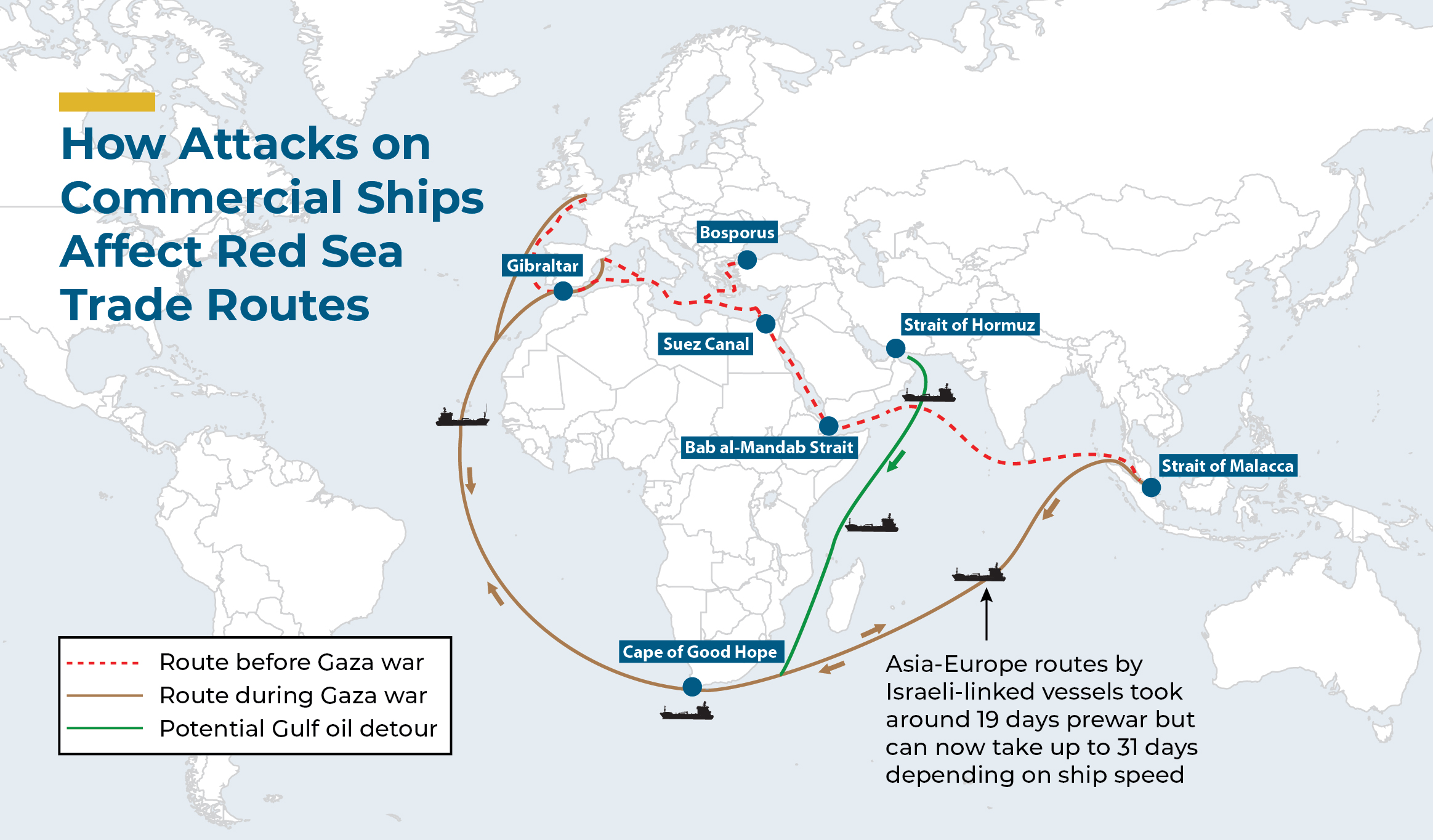
These disruptions have forced many shipping companies to reroute their vessels around the Cape of Good Hope, significantly increasing transit times and operational costs. The Suez Canal, a vital corridor connecting the Mediterranean Sea with the Red Sea, has seen a reduction in traffic as ships avoid the perilous Red Sea passage. This diversion has led to an estimated $80 billion worth of cargo being rerouted, resulting in a substantial logistical challenge for global trade networks.
The chemical shipping industry has been particularly affected, with Europe and Asia experiencing the most pronounced impacts. The instability has led to increased shipping rates and a reshuffling of supply chains, as companies seek to mitigate risks and ensure the delivery of essential goods. The cost of shipping a 40-foot container from Asia to Europe has surged, further straining an already fragile supply chain system.
The Red Sea disruptions are not only a logistical nightmare but also a catalyst for broader economic repercussions. The increased shipping costs and delays have a ripple effect on global markets, influencing everything from consumer goods prices to manufacturing schedules. The uncertainty surrounding the security of the Red Sea passage has prompted many businesses to seek alternative routes and suppliers, further complicating the global supply chain landscape.
Shipping companies and industry stakeholders are actively seeking strategies to enhance resilience against such disruptions. Diversifying supply chains, investing in data analytics, and building solid partnerships are among the measures being implemented to better predict and respond to such crises. The need for robust contingency plans has never been more apparent, as companies strive to navigate the complexities of global trade in an increasingly volatile environment.
The ongoing conflict and the resultant shipping disruptions underscore the interconnected nature of global trade. A disturbance in one region can have far-reaching impacts, affecting industries and economies thousands of miles away. As the situation in the Red Sea remains fluid, the global shipping industry must continue to adapt and innovate to mitigate the challenges posed by these disruptions.
The Red Sea disruptions have created a complex web of challenges for global shipping, with increased transit times, higher costs, and significant logistical hurdles. The ongoing efforts to navigate these challenges highlight the critical need for resilience and adaptability in the face of an unpredictable global trade environment.
---
This summary is based on information from multiple sources, including FreightWaves, Maersk, and Euromonitor, providing a comprehensive overview of the current situation and its implications for global shipping.
Topics
Spotlight
